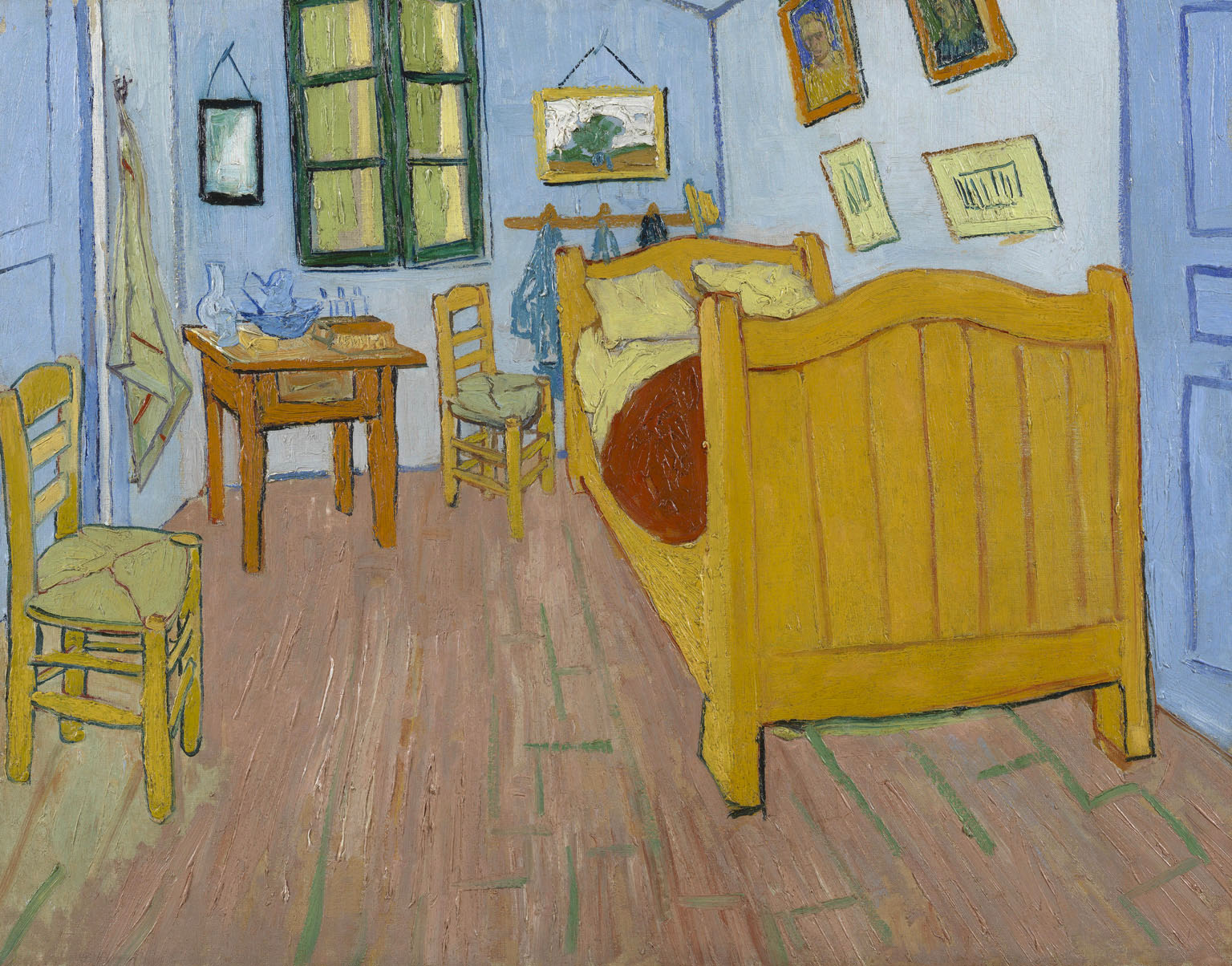
VAN GOGH MUSEUM
The most comprehensive collection in the world of Vincent van Gogh’s work was amassed by his art dealer brother Theo and is housed in this museum. It includes more than 200 of his paintings, over 500 drawings, and hundreds of letters, as well as works by his contemporaries—though not all are on display. The display in Gerrit Rietveld’s stunning 1973 building works thematically through van Gogh’s life, exploring his struggles and development as an artist and how he influenced, and was influenced by, other artists.
NEED TO KNOW
![]() Museumplein 6 • 020 570 5200 • www.vangoghmuseum.nl/en • Open Jan–Feb & Nov–Dec 21: 9am–5pm daily (to 9pm Fri); Mar–Jun & Sep–Oct: 9am–6pm daily (to 9pm Fri); Jul–Aug & Dec 22–Dec 31: 9am–7pm daily (to 9pm Fri & Sat) • Adm $21.50 (under 18 free) Audio tours $6; group tours (up to 15 people) $96, by appointment only
Museumplein 6 • 020 570 5200 • www.vangoghmuseum.nl/en • Open Jan–Feb & Nov–Dec 21: 9am–5pm daily (to 9pm Fri); Mar–Jun & Sep–Oct: 9am–6pm daily (to 9pm Fri); Jul–Aug & Dec 22–Dec 31: 9am–7pm daily (to 9pm Fri & Sat) • Adm $21.50 (under 18 free) Audio tours $6; group tours (up to 15 people) $96, by appointment only
- The museum has a useful self-service café, which is situated on the ground floor.
- To avoid the crowds, buy tickets on the museum’s website. The best times for viewing the gallery are early morning or after 3pm. Last admission is 30 minutes before closing.
Museum Guide
Exhibits are displayed on all floors and present the complete story of the artist, his vision, his ideas and ambitions, his influences, and the various myths surrounding him. The works are set in the context of other artists of the time. Many of the pivotal paintings form the focus of a theme. Check the latest floor plan at the museum, as exhibits are moved around regularly.

Museum Floor Plan
1. The Bedroom
The mastery of this painting (1888) lies in the simplicity of the subject and the subtly alternating blocks of color. Van Gogh was so happy with the result, he made two copies.

The Bedroom
2. Almond Blossom
Van Gogh made this picture of white almond blossom against a blue sky for his new nephew, born in January 1890 and named after him.
3. The Reaper
While undergoing treatment in Saint-Rémy, van Gogh found solace painting people who worked the land. He painted three versions of The Reaper (1889).
4. Wheatfield with Crows
One of the panoramic landscapes that van Gogh painted in 1890, during the last days of his life, this famous picture with its dead-end track and menacing, crow-filled sky perhaps reveals his tortured state of mind.

Wheatfield with Crows
5. A Pair of Shoes
Van Gogh gives character to a pair of worn boots in one of the first paintings after his move to Paris (1886). The dark palette harks back to his Nuenen work.
6. Fishing Boats on the Beach at Les Saintes-Maries-de-la-Mer
A trip to the sea in 1888 produced these colorful, stylized boats. Look closely and you will see grains of sand, blown onto the canvas and stuck there forever as the paint dried.
7. The Potato Eaters
The culmination of his years in Nuenen, this was van Gogh’s first major composition (1885). He wanted to portray the peasants realistically, not to glamorize them, but the painting was not the critical success he had hoped for.
8. Sunflowers
This vibrant painting (1889) was intended to be one of a series of still lifes to fill the “Yellow House” at Arles. Van Gogh chose sunflowers because he was expecting Paul Gauguin and knew his friend liked them. The predominant yellows and oranges contrast with strokes of brilliant mauve and red.

Sunflowers
9. The Bridge in the Rain
This work, painted in 1887, illustrates van Gogh’s interest in Japanese art, in particular Utagawa Hiroshige. However, van Gogh used far brighter colors and greater contrasts.
10. Self-Portrait as a Painter
The last and most accomplished in a series of self-portraits painted in 1887, shortly before he left Paris, reveals van Gogh’s distinctive interpretation of Pointillism. He chose himself as the subject since he could seldom afford models.
